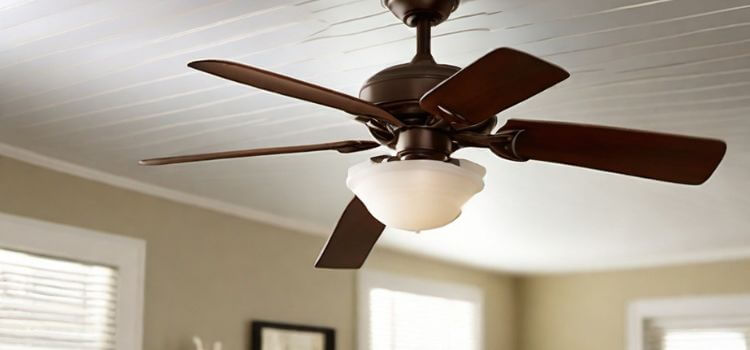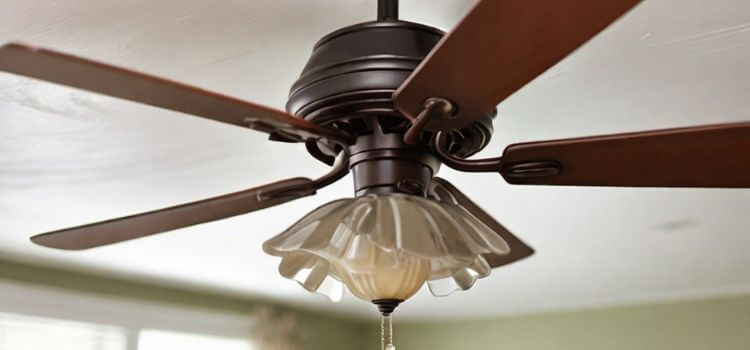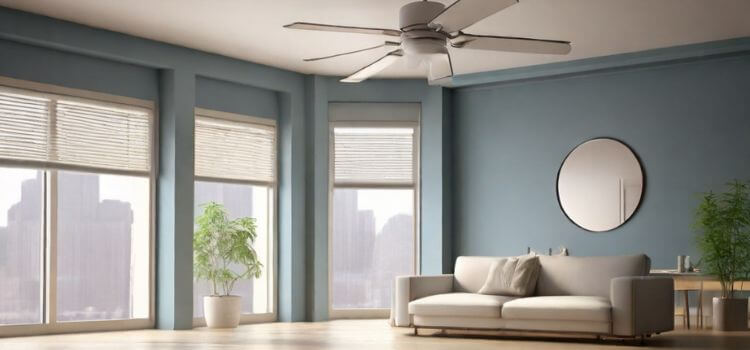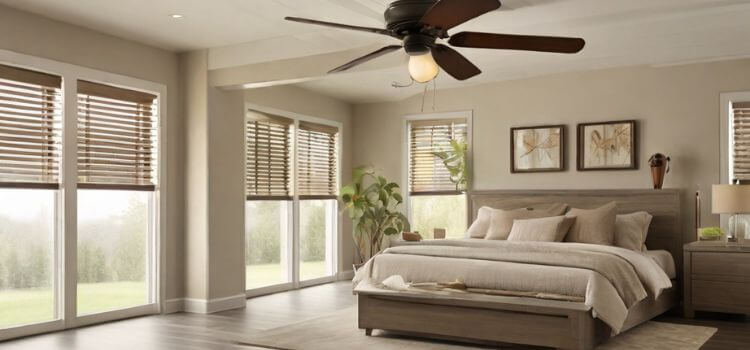As an Amazon Associate, I earn from qualifying purchases.
Humidity levels greatly impact our comfort and wellbeing, particularly in our houses. Excessive moisture in the air can cause mold to grow, musty odors, and discomfort. Ceiling fans are useful tools for battling extreme humidity. This in-depth tutorial will explore how ceiling fans lower humidity and offer helpful advice on keeping your home environment balanced.
Comprehending the Humidity
The quantity of moisture in the air is called humidity. It has a significant impact on our comfort and how we interpret temperature. Low humidity can cause discomfort and dryness, while high humidity can make a space feel warmer than it actually is.

With the aid of ceiling fans, air may be more evenly distributed across a space, improving circulation and avoiding the formation of damp, stagnant pockets.
How Humidity Is Reduced by Ceiling Fans
Ceiling fans facilitate air circulation, enhancing general ventilation and removing surface moisture. The rotation of the fan blades generates a mild wind that improves moisture evaporation from the skin and other surfaces, decreasing the perceived humidity levels.
You may generate air currents that encourage ventilation and avoid moisture buildup by placing ceiling fans strategically throughout your house.
The Best Ceiling Fan Settings to Manage Humidity
Utilizing ceiling fans properly is crucial to maximizing their ability to reduce humidity. Adjust your ceiling fan to operate faster and counterclockwise to generate a cooling breeze in hot and muggy conditions. You may feel more comfortable and cool thanks to this airflow’s ability to speed up the rate at which your skin evaporative layers evaporate.

Running your ceiling fan at a low speed in reverse (clockwise orientation) during colder months or times of low humidity will assist in circulating warm air trapped near the ceiling back down into the room, guaranteeing more balanced temperature distribution.
Ceiling Fan Positioning
The key to maximizing ceiling fans’ ability to reduce humidity is correctly positioning them. Install fans where moisture tends to collect, such as basements, bathrooms, and kitchens. Furthermore, positioning fans next to windows and doors can aid in cross-ventilation, which lets stale air out and new air in.
Upkeep Advice for Effective Functioning
Regular maintenance is necessary to guarantee that your ceiling fans reduce humidity effectively. Maintaining dust-free and clean fan blades can improve airflow and decrease inefficiency.

To further reduce noise and vibration, look for any loose or shaky blades and tighten screws as necessary.
Advantages of Humidity Control with Ceiling Fans
In addition to lowering humidity, ceiling fans have several other advantages for comfort and energy efficiency in buildings. They can enhance cooling efforts and use less energy than air conditioners, saving you money on electricity bills. Furthermore, ceiling fans are adaptable additions to any home decor because they are available in various types and designs.
Does Humidity Drop With Ceiling Fans?
Ceiling fans may efficiently reduce humidity by increasing air circulation and surface evaporation.

Ceiling fans aid in preventing moisture buildup and maintaining ideal humidity levels for comfort and health by generating airflow within a space.
FAQs
A room’s humidity levels can be lowered using ceiling fans to improve ventilation and encourage surface evaporation.
It is true that carefully positioning ceiling fans in a basement can aid in air circulation and moisture reduction, preventing mildew and moisture buildup.
Although they have different uses, dehumidifiers and ceiling fans can work together to regulate humidity. Ceiling fans facilitate air movement and evaporation, while dehumidifiers actively eliminate surplus moisture from the air.
Ceiling fans can be left on for extended periods to keep humidity and circulation levels constant. However, modifying the fan’s direction and speed to the weather and season is important.
When properly operated and configured, any well-maintained ceiling fan can contribute to humidity control. Some models may even include features like moisture-resistant materials.
Installing ceiling fans outdoors can improve comfort during hot and muggy weather by increasing airflow and lowering humidity levels.

Conclusion
To summarize, ceiling fans are useful equipment for lowering humidity and enhancing indoor air quality. Ceiling fans help maintain the ideal moisture levels for a cozy and healthy living space by encouraging air circulation and improving evaporation. Following this guide’s advice and adding ceiling fans to your home’s ventilation strategy, you may successfully manage high humidity and enjoy a more comfortable living space.
As an Amazon Associate, I earn from qualifying purchases.
Leave a Reply